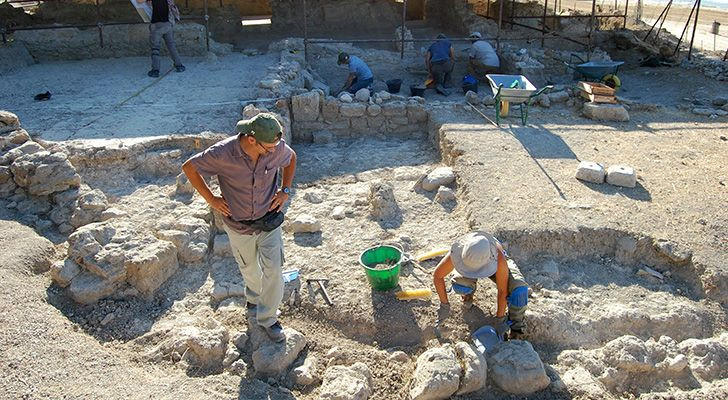Archaeologists Uncover Sicilian Villa From Ancient Roman Empire

Archaeologists have uncovered new pieces of an ancient Roman villa as well as artifacts that are telling them more about both this particular site and the economic system of Sicily as a whole.
The University of South Florida reported that a team excavating the 5,400-square-foot Roman villa called
Durrueli, near the coastal town of Realmonte on the Italian island Sicily, finding new sections of the estate and clues about what happened within its walls.
According to the university, the new walls and floor levels, staircase and water channel found in the structure has helped the researchers conclude that it was “consistently occupied” between the 2nd and 7th centuries, with a reconfiguration in the 5th century AD. Digging up cookware, lamps, pottery and pottery-making equipment “leads researchers to believe an important function of the village was to produce pottery, bricks and tiles [on an] industrial scale, helping explain the economic history of Late Antique Sicily.”
Portions of the site had already been dug up a few decades ago, when previous archaeologists worked on the villa, but the university said that team “did not discover such an extensive part of Roman history.” The current group used 3D scans of the entire site, both from the ground and from the air, to guide their excavation efforts and interpret what they found.
Research is continuing at the villa.
The university noted that Tampa is a sister city with Agrigento, the capital of the province in western Sicily where Realmonte is located.
Although subsequent societies have used them as well, villas were summer homes the ancient Romans used, located in the suburbs or countryside. They were the dwellings of upper class individuals and existed in more than just Italy. While ancient Rome began as a city, it grew tremendously — the Roman Empire was extensive and had conquered far more lands by the time the Durrueli villa came along. At its peak the empire included lands that are now part of Great Britain, Spain, France, Portugal, Turkey, Egypt, Morocco, Algeria, Tunisia, Libya, Greece, Israel and other southern European, eastern European and western Asia countries.

Last year archaeologists confirmed that a villa built between the late 2nd century and the early 3rd century had been uncovered in southern England, near Bath, after workers digging in a garden on the property hit colorful ceramic tiles about 1.5 feet down. It was reportedly one of the largest villas to be built in Britain during the Roman era, potentially having between 20 and 25 rooms on just the ground floor. The archaeologists found a bathhouse, pottery, coins, shells from oyster and whelk, roof tiles, a coffin and other artifacts.
“This site has not been touched since its final collapse around 1500 years ago and so has great potential to teach us about life in Roman and post-Roman Britain,” David Roberts, an archaeologist from Historic England, said at the time. “The discovery of such an elaborate and extraordinarily well-preserved villa, undamaged by agriculture, is unparalleled in recent years and we think has great potential for further research.”
© Copyright IBTimes 2025. All rights reserved.





















